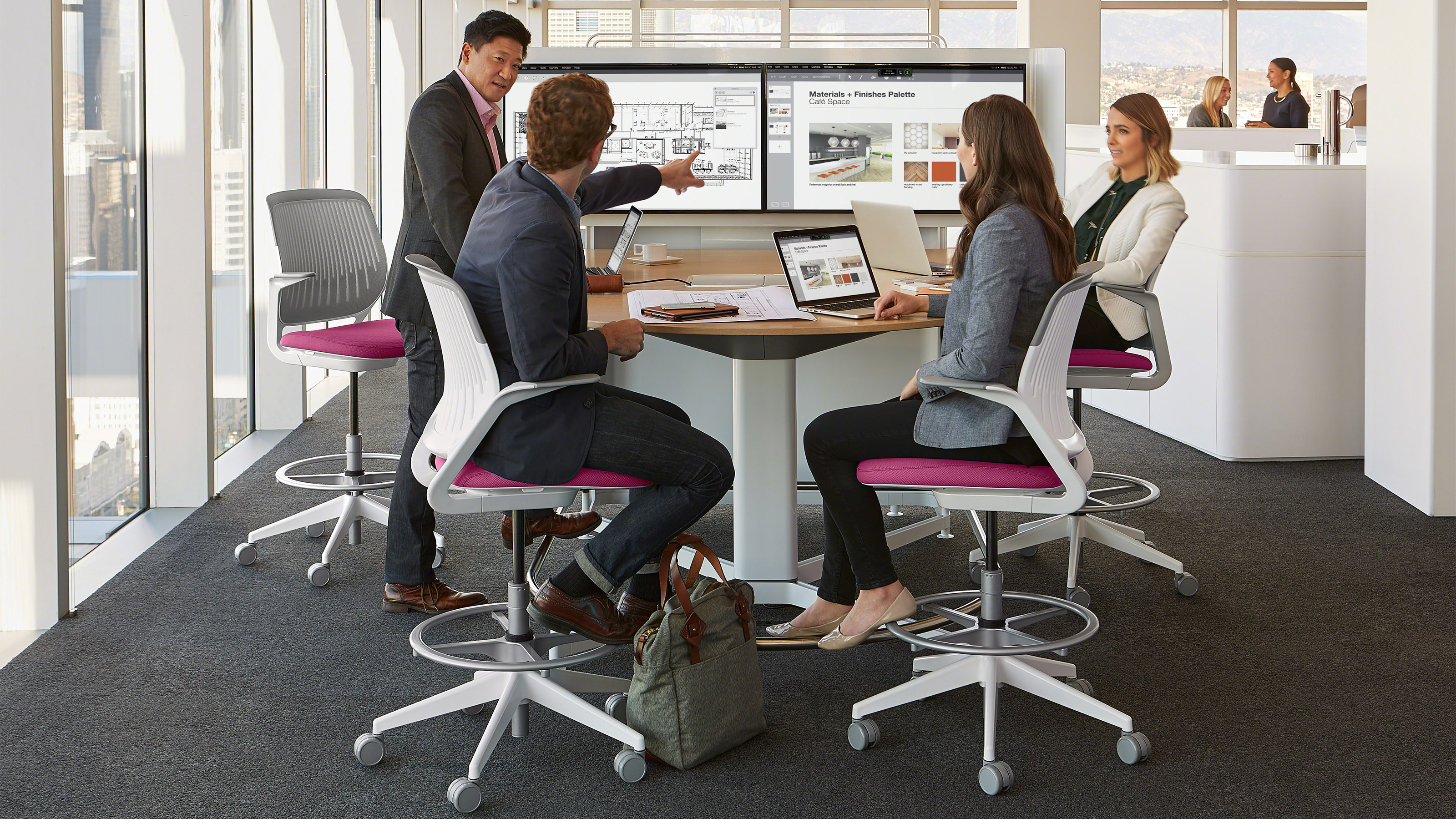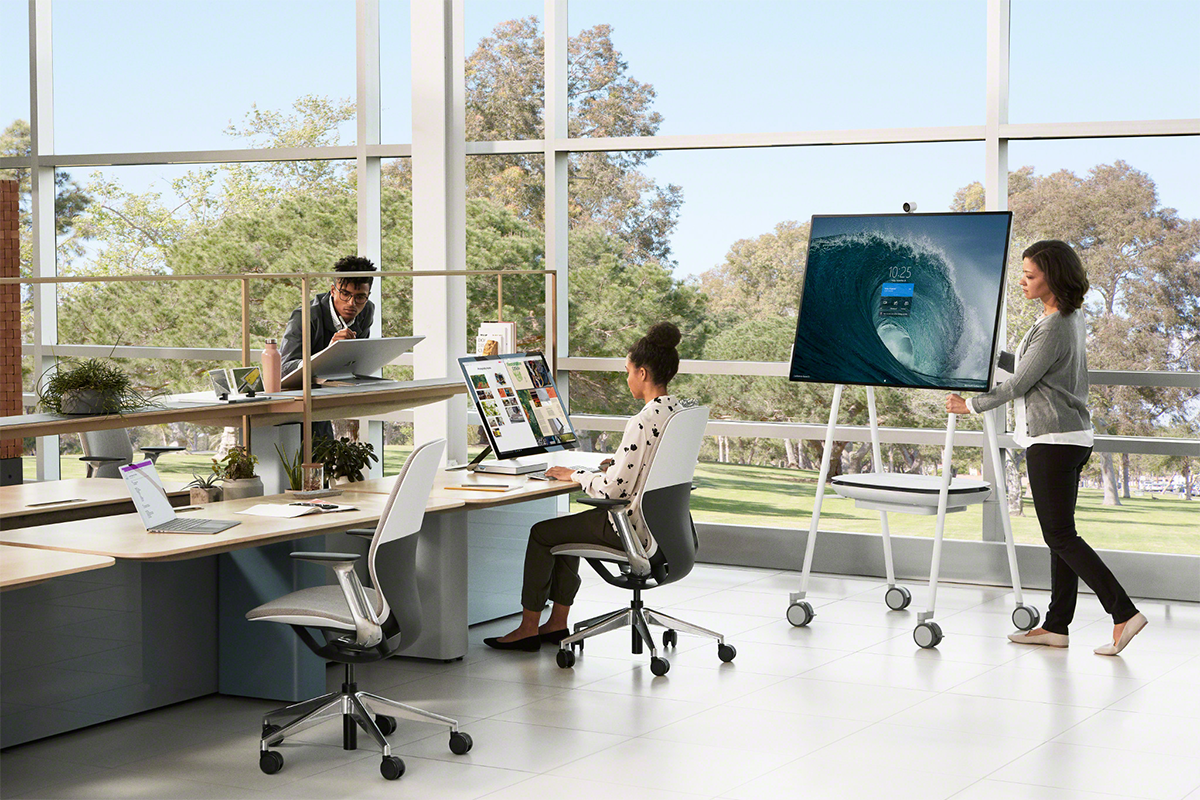We use cookies to maximize your online experience with us. By closing this window, you consent to our cookie policy. You can change your cookie settings in your browser any time. For more information, please see our Privacy Policy located on the footer of this site.
Digital Transformation of the Workplace: Creating the Agile Office

Written by Rob Newell, Chief Technology Officer | dancker
Workplace technology has long played a role in an organization’s agility – their ability to move quickly and easily through changing times.
Central to dancker’s mission is our motivation to help our clients integrate technology into their workflow and their workspace, ensuring that it’s integrated with the architecture and furniture from the start of a design project instead of being an add-on at the end. By planning ahead and investing in an agile workplace where technology is highly integrated, organizations are better prepared to avoid disruptions and keep moving forward.

PLANNING AHEAD
At dancker, we were as prepared for today’s COVID-19 pandemic as we could have been. With deep roots in New Jersey and New York, for better or worse many of us had been through major events such as 9/11 and Hurricane Sandy, which both had long-lasting impacts for the way people and places functioned in the region. We knew the role technology could play in keeping us all connected when we couldn’t physically be together and were motivated to make it a central part of our corporate strategy.
Because we’d invested in our own agile culture in recent years, empowering flexibility and mobility, all of our employees have laptops and mobile devices. Our tech infrastructure is cloud-based, so it’s accessible anywhere using tools like Office 365, Zoom, and VoIP. All of this meant that from a technology and productivity standpoint, COVID-19 had very little impact on dancker’s operations. Many of our clients were similarly prepared. Companies that had not already invested in mobile technology and infrastructure were left scrambling, and had to quickly react, often forced to make compromises with sub-standard equipment due to high demands.
PRIORITIZING SAFETY
So, what standards should workplace leaders be setting? Right now, top of mind for our clients is how to make their workplaces safe for employees’ and clients’ return. Social distancing, workstation spacing, and touchless interactions all become a bigger priority. At entry points, thermal temperature-scanning devices can scan people as they walk up, ensuring that all who enter meet new standards for health and safety. Voice-controlled devices can also be installed to find and reserve meeting spaces, and to turn on lights or equipment and start meetings. Web-based tools and apps can take this a step further and allow employees to manage meetings from their own devices.
Bring-your-own-device (BYOD) protocols can also be implemented to ease mobility and simplify the process of launching software and broadcasting presentations using wireless Bluetooth or WiFi, reducing the need to use shared devices and/or wired connections in shared spaces. But the reality is that the return to the workplace will happen slowly, and that large numbers of employees will continue to work from home for months, and possibly longer.

EMPOWERING MOBILITY
To successfully support mobility and productivity, companies need to provide employees with the technology they need for professional-level collaboration, regardless of where they’re working. People in the office need to be able to connect with their remote colleagues, and those working from home need to feel connected to the office. Both types of team members need laptops and other mobile devices like tablets or smartphones, and many (if not all) should also have easy access to extra monitors and equipment that goes beyond what’s typically built in. High-quality webcams, microphones, speakers or headsets, and lights can help remote employees feel like their home office is just as effective as the company office.
Equipping team members with personal mobile devices and accessories ensures that they can take their office with them whenever they need to shift spaces, whether they’re shifting down the hall for a meeting, or back home. It helps employees and whole organizations be more flexible and agile, which is especially crucial during periods of uncertainty.
SHIFTING FROM NICE-TO-HAVE TO NEED-TO-HAVE
Mobile, voice-controlled, personal devices have been gaining a bigger presence in many workplaces for years, but the current global pandemic has shifted them from nice-to-have to need-to-have technologies in the workplace, and beyond. They’ve become baseline expectations not only to support a workplace’s safety, but also its long-term productivity and effectiveness.
Today’s nice-to-haves include technology that is even more flexible, such as wireless presentation tools that connect personal devices and that are not constrained to a single type of device or software. So, clients and guests who might operate on different platforms (e.g. Zoom vs. Teams vs. Webex) have no trouble connecting. Technology changes rapidly though, so stay tuned; it won’t be long before we’re talking about these tools as need-to-haves as well. All the more reason to build agility into your workplace today.
We can help determine the best technology solutions to implement in your spaces to help keep your employees safe and connected – connect with us today.
